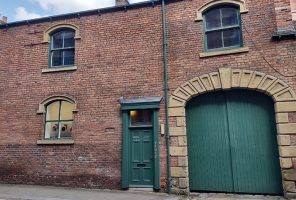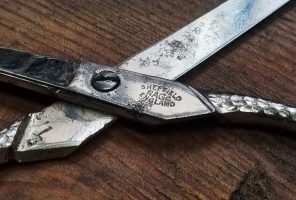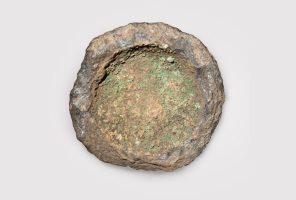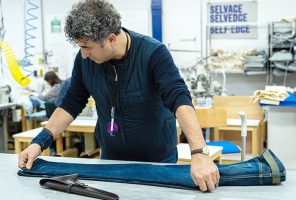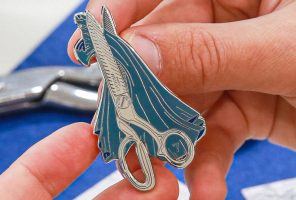TRADITIONAL CRAFTS
Traditional crafts are everywhere to be seen in the UK’s built environment. Look around you – at the thatched rooves of country cottages, the carved detail of Victorian homes, and even the authentic neon signage still used by style-savvy businesses – and you will witness the living legacy of skilled craftspeople past and present.
Sadly, many traditional crafts are deemed at risk of disappearing in this country, due largely to decline in the number of skilled practitioners. In 2021, the Heritage Crafts Association added over 20 additional crafts to its “red list” of endangered crafts, bringing the total to over 130. There simply aren’t enough craftspeople to keep the good old ways alive.
One organisation seeking to reverse the ebbing away of craft skills is The Prince’s Foundation, an education charity established in 1986 by Charles III, then Prince of Wales.

The Prince’s Foundation runs some of the UK’s top educational programmes for traditional crafts, including the long running Building Craft Programme, now in its fifteenth year, and the recently-established Building Arts Programme delivered in collaboration with QEST (the Queen Elizabeth Scholarship Trust). Both programmes take on a small cohort of students with various craft specialisms for a period ranging from 8-9 months. Participants study with craft businesses around the country, before bringing their newly honed skills together for collaborative projects at Dumfries House in Scotland, the Foundation’s HQ.
Reconnecting with locality, traditions and culture
Demonstrating how traditional craft can be applied in the 21st Century is a big part of The Prince’s Foundation’s programmes. According to Michael Goodger, the Foundation’s Built Environment Education Manager, demand for heritage skills is high:
“There are six-million or so traditional buildings in the UK, and it takes various specific skills to look after them appropriately, so restoration and conservation is a significant challenge.
“There is also huge potential to adopt traditional skills and natural materials within the creation of new work, utilising these techniques to enhance and shape our built environment in a way which fuses both traditional and contemporary practices.”
Gladly, the Foundation has no difficulty in finding talented students to join its programmes, and who can ultimately find a place in the crafts industry.
“A lot of the students on the Building Craft Programme are experienced craftspeople who come here quite frustrated with the construction sector’s mass waste and mass production, its inefficiencies and one-size fits all approach,” Michael explains.
“A mass housing scheme might pay no reference to the locality, traditions and culture of a place, whereas traditional architecture would typically respond much more to the local skills base, geography and materials. The students are keen to reconnect with that.”
The Prince’s Foundation encourages a particular approach to arts and craft, which has connections between people, places and traditional techniques at its heart.
“We encourage people to consider what materials they use, whether their approach is appropriate to the locality, and whether there are skills historically associated with that place – things that attach and embed the product to a particular area, rather than it being something generic,” says Michael.
“Our approach is about using your skills to stop and appreciate where you are, and take it in. It creates a memory and attachment, and encourages people to invest physically and emotionally in the place. Craft is a very good way to build those connections.”
Connecting craft communities
Building Arts and Building Craft students are given opportunities to learn how traditional skills are used in the present day, through placements with craft businesses and artisans. Depending on a student’s specialisms, they could work with any combination of craftspeople throughout the land – be they carpenters or bricklayers, plasterers or metalworkers.
“It’s an amazing opportunity for the students at that stage in their career,” says Michael.
“Not only do they absorb all this knowledge from other craftspeople as they move around the UK; they also build a network of like-minded people, which sometimes leads to employment, or gives them access to expertise they can call upon in future.”
Building Craft with Ernest Wright
Ernest Wright hosted one of The Prince’s Foundation’s students, Anaïs Bansal – a skilled blacksmith and metalworker – as part of the Building Craft Programme 2021-22.
Anaïs worked for two months alongside everyone in the workshop, learning specialist scissors-making skills including forging, grinding, sanding, hardening, rumbling and putting-together. She often studied the same skill with multiple craftsmen, thereby gaining an appreciation of the individual touches that can go into making scissors.
“The placement gave Anaïs an immense amount of knowledge, and widened her physical skill set in terms of metalworking – and more specifically, high-quality, traditional finishing processes that could be applied to any project, including work on buildings,” says Michael.
“She acquired a greater understanding of the steel compounds that are suitable for a range of tools and different tool usage, and learned about machinery that could be used in various kinds of projects going forward.
“From a business perspective, she was able to learn about production levels and workflow within the making process, and she gained knowledge of suppliers and companies that could be useful contacts in the future.”
We remember Anaïs’s time at Ernest Wright fondly, for her talent, hard work, and her generosity with biscuits – all crucial attributes for any member of the team.
Following her placement, Anaïs completed the Building Crafts Programme at Dumfries House, where the students collaborated on a building project.
Anaïs designed metalwork lanterns for the building, taking inspiration from the oak trees that previously occupied the site. There’s a poetry to the idea that where the old oaks were felled, the strong roots of a new craft career were spreading.
For more information on the Building Craft Programme and the Building Arts Programme, visit The Prince’s Foundation website.











